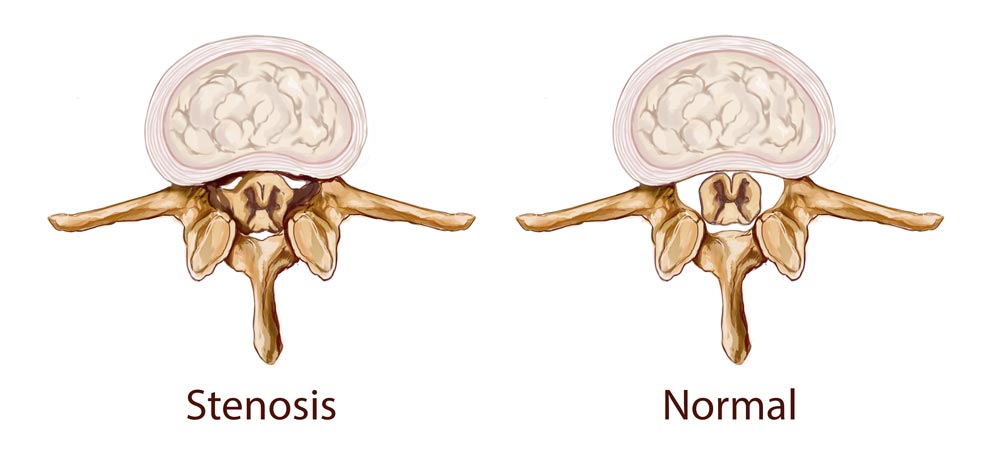Pain in the neck or lower back are often associated with spinal stenosis, but if left untreated, loss of coordination and weakness in the limbs can also develop.


Pain in the neck or lower back are often associated with spinal stenosis, but if left untreated, loss of coordination and weakness in the limbs can also develop.
Although pain symptoms are not always present, the condition does worsen over time and can cause mild to debilitating neck and lower back pain. These two centralized points of pain are described as “cervical spinal stenosis” (affecting parts of the spine in the neck) and “lumbar spinal stenosis” (affecting parts of the spine in the lower back). Evaluating pain for diagnosis is critical to prevent further degeneration and back or neck pain.
Along with neck or lower back pain, spinal stenosis symptoms can including a burning sensation that radiates to other areas of the body and a loss of coordination or weakness in the limbs. Issues associated with walking and other balance-dependent activities can also be a sign of spinal stenosis.
While spinal stenosis is most often age-related, with symptoms developing slowly over time, spinal stenosis can also be associated with traumatic injury, tumors around the spine or even spondylolisthesis. Discussing symptoms and other factors like injuries will help Dr. Bruggeman determine whether you have spinal stenosis and what minimally invasive spine treatment might be best for you.
Conservative measures like physical therapy, medications, or spinal injections are often used before and initially after spinal stenosis is diagnosed. Although these nonoperative measures can provide temporary pain relief for some people, symptoms will likely worsen over time and often require surgical treatment to provide long lasting pain relief.
Texas Spine Care Centers’ minimally invasive surgeries to treat spinal stenosis widen the spinal canal. Dr. Bruggeman will assess your individual situation to determine which procedure is right for you. The recommended course could be a minimally invasive laminectomy procedure removing sections of the vertebrae to provide more space, or one of several advanced, minimally invasive spinal fusion options to stabilize the canal space by fusing vertebrae together. Dr. Bruggeman will evaluate all of your options to determine what treatment is ideal given your individual case and medical history.
Take the first step toward a pain-free life. Use our online pain evaluation tool to determine what treatment may be right for you.